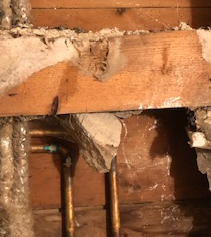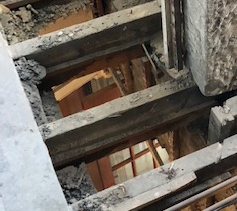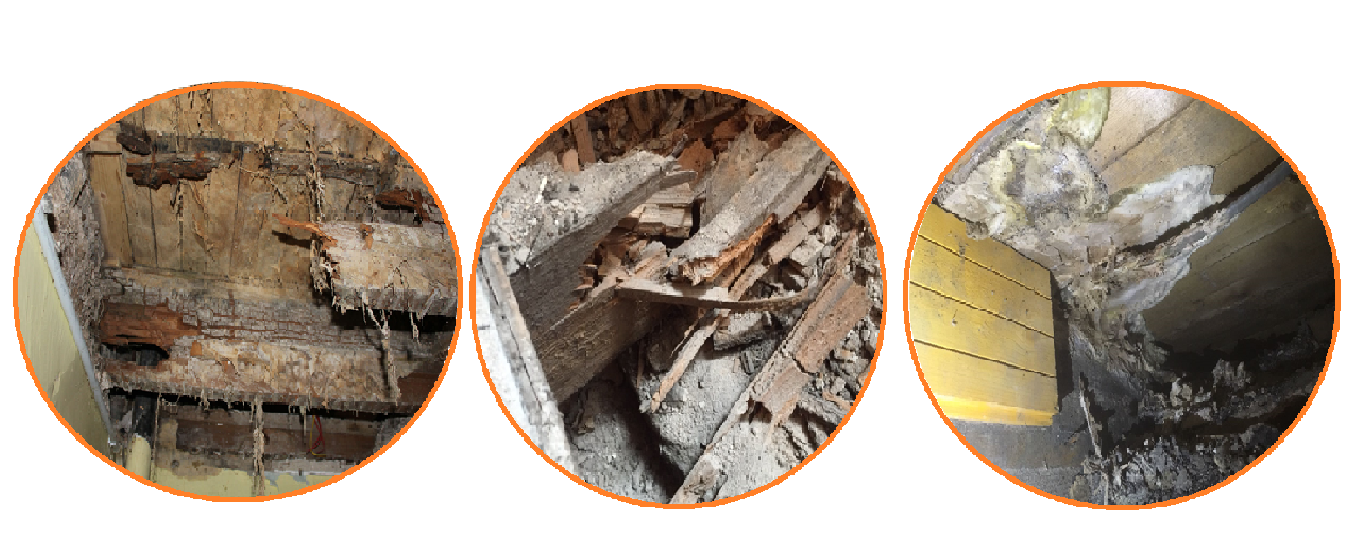Alliance understand the importance of treating dry rot and have helped many clients with dry rot treatment across Scotland from our Perth, Dundee and Fife centres. We also cater to professional clients from Glasgow, Aberdeen, Edinburgh, Stirling, Dundee, Dunfermline, Kirkcaldy and beyond.
If you are looking for a first-class dry rot treatment in any of these areas, then contact us today at 01764 663107.

What is Dry Rot?
Dry rot is often thought of as a building cancer, rampaging through properties and rapidly destroying any timber in its path, old or new. Dry rot is a fungus that thrives in moist, humid, unventilated conditions. It’s so destructive that it will even penetrate brickwork and concrete to get to more timber.
If left untreated, dry rot can cause widespread damage to structural timbers, skirting boards, door and window frames and wood flooring. It is the most serious type of damage possible to building timber. However, Alliance, expert dry rot specialists in Perth, Dundee and Fife, can treat dry rot in an effective and timely manner.
Dry Rot Vs Wet Rot
If dry rot needs moisture to grow and spread, you may be wondering what the difference is between dry rot vs wet rot.
Wet rot needs a moisture content of around 50% on the timber (or other types of surfaces) to grow effectively. If there has been a major leak caused by broken pipes, bad plumbing or a crack in the roof, wet rot is more likely to grow.
Dry rot, on the other hand, only needs around 20% moisture content on its chosen target surface. It will, in fact, not grow in dry conditions but needs less moisture to grow compared to wet rot.
Properties with inadequate ventilation and high levels of humidity create the perfect breeding ground for dry rot. If you spot built-up areas of condensation on your windows, this could be an early warning sign of dry rot growing. It’s important to take extra care to properly ventilate your home, particularly if you live in a wet or humid location.
.png)

What causes Dry Rot?
Although the dry rot fungus is commonly called ‘dry’ rot, moisture is essential for it to thrive. Without water or dampness of some kind, the fungus spores cannot germinate or spread. Common causes of dry rot are:
- Leaky pipes
- Faulty roofs
- Damaged gutters
- Leaky washing machine (or other appliances)
- Faulty drainage
Inadequate ventilation adds to the problem and creates ideal conditions for the dry rot fungus to germinate, grow and spread.
The dry rot fungus (Serpula lacrymans) can be thought of as 'living in masonry and eating wood'. Because the fungus thrives in damp, dark, unventilated conditions, it can occur in the areas of a property that are not often seen, such as floor voids, cracks in walls or behind timber panelling.
Damage caused by dry rot can be extensive before the attack is even discovered. If you suspect any dry rot causes occurring in your property, it’s essential to contact a dry rot specialist immediately.
What are the signs of dry rot?
The signs of dry rot are generally obvious, but you can contact a professional dry rot specialist like Alliance for a definite diagnosis and an appropriate dry rot treatment plan.
Common signs of dry rot are:
- Damaged, cracked or decaying wood and timber
- A damp, musty smell
- Brittle, crumbling timber
- Soft, spongy timber
- Grey or white strands on timber
- Weak or fragile timber
- Patches of orange or brown spores
- Mushroom like fungus bodies
How does dry rot spread?
Dry rot is a living, growing fungus with four distinct phases to its lifecycle:
- Spore: the orange/red/rusty-coloured ‘seeds’ of the fungus that are harmless unless they come into contact with moisture and timber to create ideal conditions for growth
- Hyphae: the stage when whitish/greyish strands sprout from the spore and allow the fungus to begin feeding on your wood
- Mycelium: a grouping of spores with many hyphae
- Sporophore: the mushroom-like stage which creates more spores, starting the cycle again.

What does dry rot look like?
Since dry rot is a fungus, and it looks similar to mould or “mushroomy” fungi. When trying to recognise the signs of dry rot, look out for:
- Orange/red/rusty coloured fungus spores, sometimes sprouting greyish strands as they grow and spread (the hyphae)
- White, fluffy cotton-wool-like fungus, especially in dark, damp places
- A ‘mushroomy’, damp or musty smell as the damage gets underway and the fungus consumes the wood
If you notice any signs of dry rot, it’s essential to have it dealt with as quickly as possible. Contact us for a robust dry rot treatment that will stop this fungus before it causes damage to your property.
What do I do if I see signs of dry rot?
If you suspect dry rot or notice any signs of dry rot, contact Alliance immediately for a survey of the damage. Dry rot spreads quickly, so it is important to tackle the problem as soon as possible.
Addressing dry rot earlier rather than later can also be less expensive than leaving it until the damage has become more extensive. Also, remember that both wet and dry rot is caused by a fungus, meaning that when conditions are right, the dry rot will spread much further into your property.
Professional Treatment for Dry Rot by Alliance
Each case of dry rot treatment is different, but our experienced dry rot specialist team in Perth, Dundee, or Fife will always:
- Identify the extent of the dry rot outbreak using specialist equipment throughout the property
- Address the source of incoming water or moisture to remove the conditions needed for dry rot to thrive
- Treat dry rot infected areas with fungicide or other chemicals if necessary to stop and prevent attacks
- Remove and treat dry rot infected plaster and masonry if necessary
- Replace infected wood with new, treated timber to restore structural integrity to the building
If you suspect any damage to your building timbers, or even if something doesn’t look right, contact Alliance – trusted dry rot treatment company in Scotland – for a survey today.






